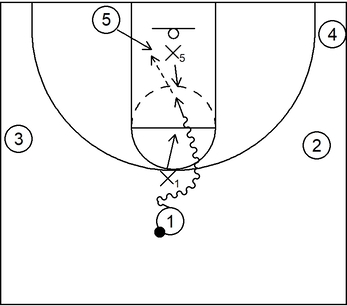What is general information about the dunker spot in basketball
The dunker spot is an area of the basketball court that is adjacent to and slightly below the short corner as well as the low post area near the baseline and lane line, which could then be occupied by certain types of offensive players, especially traditional post players.
Also, in the NBA, the dunker spot is commonly filled by players such as the power forward or center because doing so could lead to easy scoring opportunities around the basket, most notably by way of standard dunks including alley-oop dunks, hence its name.
Nevertheless, the concept of the dunker spot could still be utilized by other types of basketball teams that may not possess elite athletes who could play above the rim.
In other words, regardless if a player has the capability to dunk or not, it is possible for a certain offensive player to hold position at the dunker spot, which could then lead to a subsequent scoring opportunity for that same player.
It should be stated though that even if an offensive player fills the dunker spot, that would be more or less a non-factor without initial dribble penetration, specifically middle penetration into the lane area from perimeter areas.
That is to say, if the basketball is initially near one of the perimeter areas, especially beyond the three-point line and dribble penetration does not happen, then it ultimately would not matter if an offensive player filled the dunker spot or not.
On the other hand, when middle penetration does occur and at the same time, there is a defensive rim protector, that same defender automatically demonstrates why it would be beneficial for certain offensive players to occupy the dunker spot.
Basically, when dribble penetration in the lane happens, the player in possession of the ball would have an opportunity to score, typically by way of a floater or even a layup in certain instances.
However, if the defensive rim protector steps up to contest or simply prevent that floater/layup, then the offensive player in possession of the ball could simply throw a short-range drop pass or lob pass over the top to the offensive player initially occupying the dunker spot.
From there, that same player that initially filled the dunker spot could then quickly score themselves by way of a layup or dunk before the defensive rim protector is able to turn and contest that scoring action.
It is also noteworthy to mention that utilizing the dunker spot could be a great way to involve post players that do not score consistently or at all with traditional low post moves and/or by taking perimeter jump shots.
These particular players are generally referred to as non-shooters and their primary roles are usually to set highly effective basketball screens and/or crash the boards.
When a non-shooting post player is on the floor, the same will usually score via offensive putback layups or putback dunks, tip-ins, and in some instances, by way of rolling to the basket after setting an on-ball screen.
Generally speaking, the defense will try to limit the offensive putbacks or tip-ins by boxing out those non-shooters and even more importantly, the defense will try to eliminate the effectiveness of the roll action with the drop coverage tactic.
In essence, since the non-shooting post players are limited in terms of their own scoring abilities, the defense does not have to work as hard or be too concerned about those types of players.
Put another way, the defense will typically disregard the non-shooter and focus more on other offensive players, notably those with scoring abilities.
Nonetheless, when a non-shooter fills the dunker spot, that type of action levels the playing field, so to speak.
Basically, the defensive team and more specifically, the defender protecting the basket would be more or less forced to keep an eye on the non-shooter.
If the defense attempts to ignore the non-shooter in the dunker spot, then that could fail miserably when the non-shooter scores with a high-flying dunk.
What is a basic example of offensive action that features the dunker spot

This is a basic example of offensive action that features the dunker spot. To start, 1 has possession of the ball at the top, 2 and 3 fill the left side and right side wings respectively, 4 fills the right side corner, and 5 occupies the dunker spot near the baseline.
It should also be noted that 5 could initially face the general direction of the half court line with their back towards the baseline to see the ball as well as their primary defender.
Afterwards, let’s say that 1 is able to execute a dribble move such as a double crossover to penetrate into the lane and attack the rim while X1 chases behind.
At the same time, as 1 penetrates into the lane, 5 could begin to step towards the lane with hands up near the chest area ready to receive the ball if necessary.
Furthermore, as a result of that dribble action, X5 has to either stay back and concede the layup or floater to 1 or step up to limit/prevent those possible scoring actions.
In this case, 5 decides to step up to hinder those scoring opportunities and that causes 1 to counter with a simple pass to 5 near the dunker spot.
Following that, 5 could then jump in the air and score via a layup or dunk at the rim. X5 would most likely not have enough time to turn and contest that same layup or dunk.
Related: Scoring from the “Dunker” Spot | Half Court Offense – YouTube